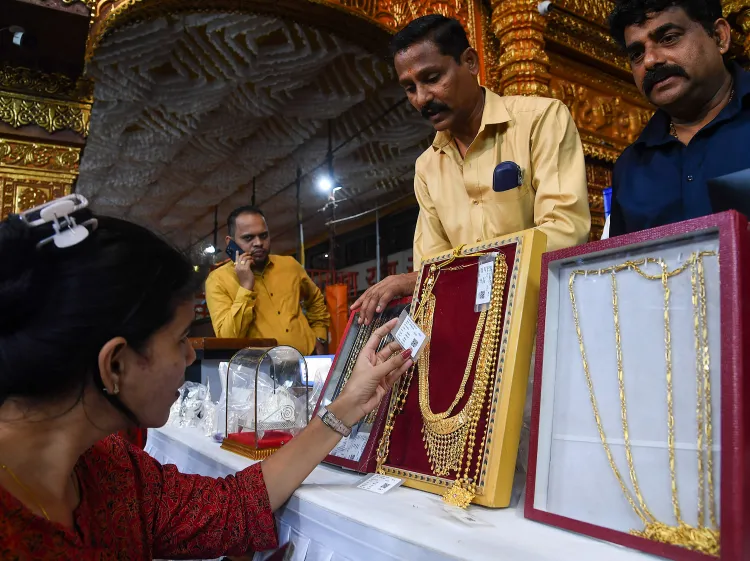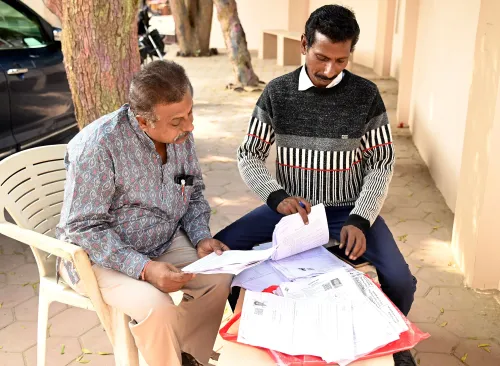Have India’s Gold Reserves Surged Past $100 Billion for the First Time?

Synopsis
Key Takeaways
- India's gold reserves exceed $100 billion for the first time.
- The RBI has increased its gold holdings significantly.
- Gold prices have surged by 65% in 2025.
- Gold's share of foreign exchange reserves has doubled over ten years.
- Gold remains a vital cultural and investment asset in India.
New Delhi, Oct 17 (NationPress) India's gold reserves, managed by the RBI as part of the nation's foreign exchange reserves, have officially crossed the $100 billion threshold for the very first time. This milestone is attributed to a significant uptick in the value of gold and heightened acquisitions by the central bank.
The gold segment of India's forex reserves rose by $3.595 billion to reach $102.365 billion during the week ending October 10, according to RBI data released on Friday. However, total foreign exchange reserves experienced a decline of $2.18 billion, settling at $697.784 billion, as the RBI intervened by releasing dollars to stabilize the rupee.
Gold's proportion in India's foreign exchange reserves has nearly doubled over the past decade—from under 7 percent to almost 15 percent. This increase reflects consistent central bank accumulation alongside a surge in global gold prices. Analysts indicate that this is the largest share of gold in the country’s total reserves since 1996-97.
In 2025, gold prices skyrocketed by as much as 65 percent due to heightened demand for the precious metal as a secure investment amid escalating geopolitical tensions in the Middle East and trade conflicts stemming from US tariff increases.
Globally, central banks have been building substantial gold reserves as a secure asset due to the uncertainties stemming from geopolitical strife. The Reserve Bank of India’s gold reserves have nearly doubled since 2021.
Since 2024, the RBI has added around 75 tonnes to its gold reserves, raising its total to 880 tonnes, which now makes up approximately 14 percent of India’s total foreign exchange reserves, according to a report by Morgan Stanley.
India ranks as the world’s second-largest gold consumer, following China, and relies heavily on imports to satisfy its demand. The tradition of purchasing gold is deeply embedded in Indian culture, often manifested in jewelry given as gifts during weddings. It also serves as a significant investment channel and status symbol for families and individuals.










